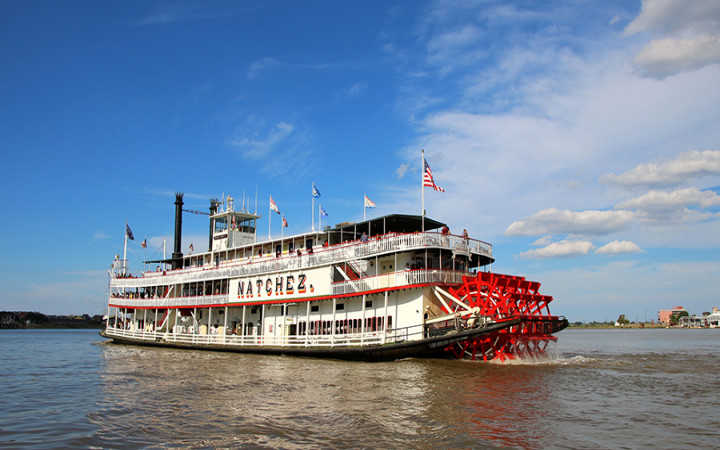Today’s Wonder of the Day was inspired by Macade. Macade Wonders, “How do steam engines work?” Thanks for WONDERing with us, Macade!
As the fledgling United States began to take shape and grow beyond its original 13 colonies, adventurers found that there was a lot of territory to explore to the south and west. Transportation back then wasn't what it is today, though.
There were no cars, trucks, trains, or airplanes. If you wanted to explore the frontier, you had to do so on foot, on horseback, or on water. Rivers offered a faster means of getting from one place to another as long as you traveled with the flow of the river.
Early boats relied upon manpower to row them or sails to power them when the wind blew. All of that changed in the late 18th century with the invention of the steamboat.
Several people must be mentioned when discussing the invention of the steamboat. Englishman Jonathan Hull patented a steamboat design as early as 1737. However, it was not until after James Watt improved upon the design of the steam engine that others began to build serious steamboats.
James Rumsey, John Stevens, and John Fitch were among the first to build and operate steamboats on American rivers. The first person to combine a steam engine with an improved hull design to create a commercially-successful steamboat, however, was Robert Fulton.
Fulton's Clermont was launched in 1807 and quickly became a success. It operated between New York City and Albany, carrying as many as 100 passengers at a time. Others soon followed Fulton's lead and the age of the steamboat had begun.
The steam engines on steamboats burned coal to heat water in a large boiler to create steam. The steam was pumped into a cylinder, causing a piston to move upward to the top of the cylinder. A valve would then open to release the steam, allowing the piston to fall back to the bottom of the cylinder.
This process would repeat over and over again. The reciprocating action of the piston was used to mechanically power a propeller or paddlewheel that would propel the boat forward. Many steamboats had a single paddlewheel at the rear of the boat (called sternwheelers), while other steamboats had dual paddlewheels on the sides of the boat (called sidewheelers).
Steamboats completely changed river transportation and trade. By the 1850s, thousands of steamboats traveled America's rivers, transporting people and goods faster than ever before.
Steamboats were not without their dangers, however. During their rise to prominence, thousands of people died in steamboat accidents. Many of these were due to boiler explosions that resulted from poor designs.
The wild, untamed rivers could also be difficult to navigate and hold unforeseen dangers, such as logjams, sandbars, snags, and shifting channels. To further complicate matters, steamboats were sometimes the target of Native American attacks on explorers entering their territory.
Steamboat captains were often their own worst enemies. Competing boats would often race each other from one port to the next, creating dangerous conditions on the river and overworking boilers to the point of explosion.
Steamboats played a major role in westward expansion. However, by the 1870s, railroads powered by steam engines had become more efficient at moving people and goods, resulting in the decline of steamboats by the early 20th century when automobiles and airplanes began to thrive.




